プロジェクトProjects
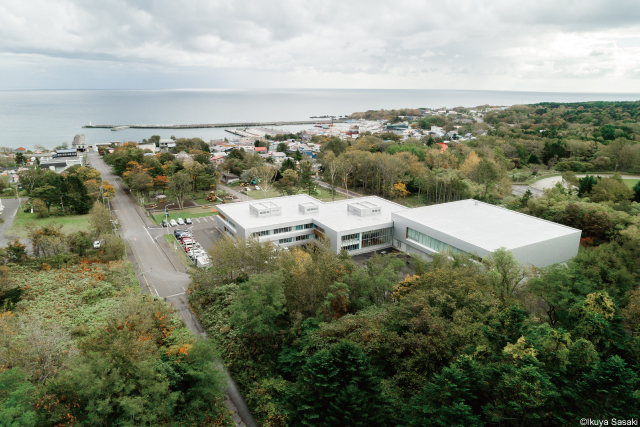
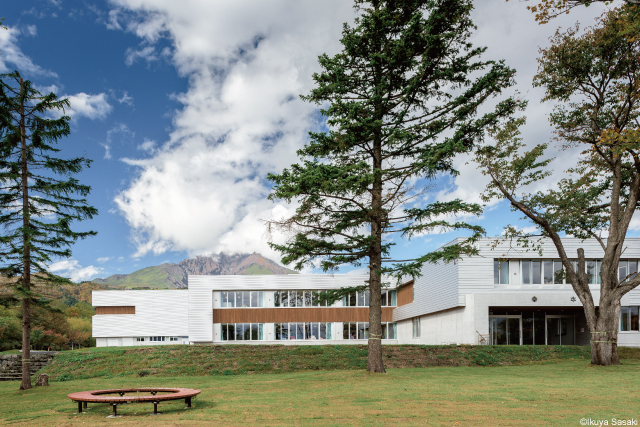
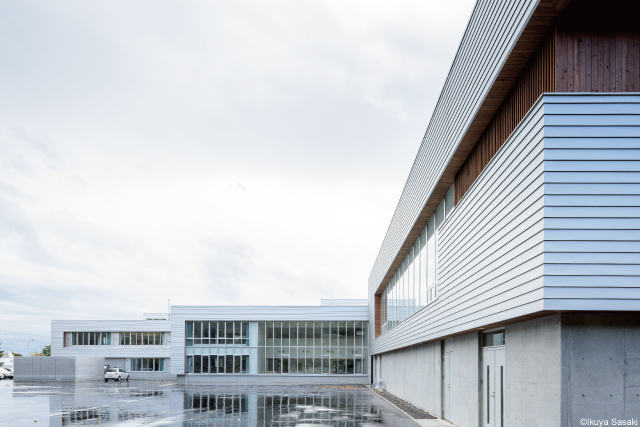
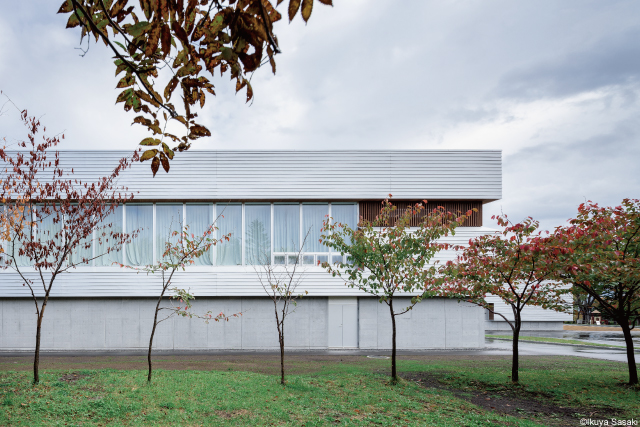
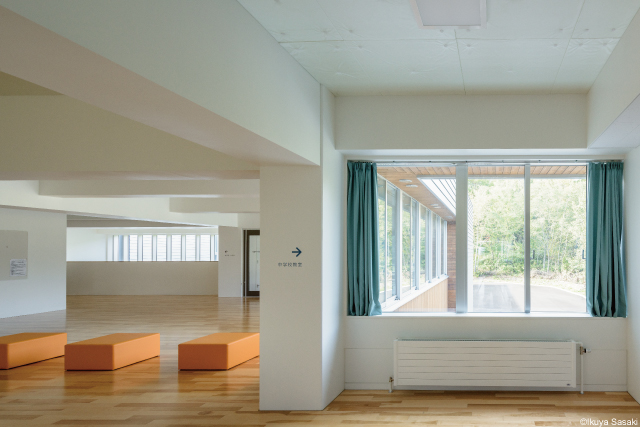
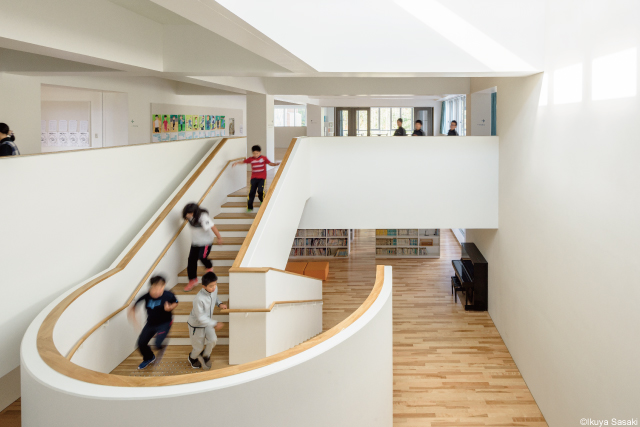
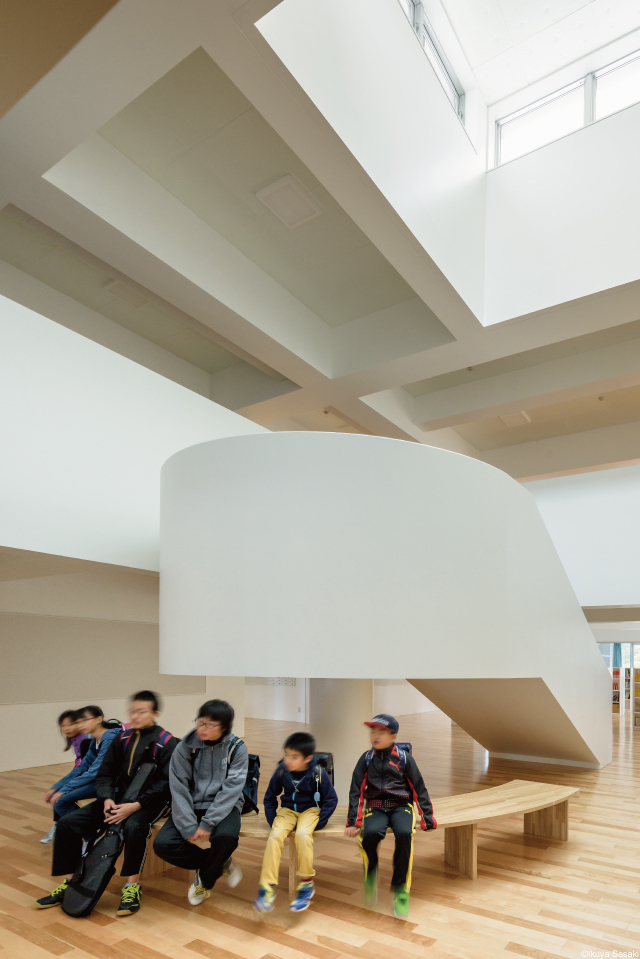
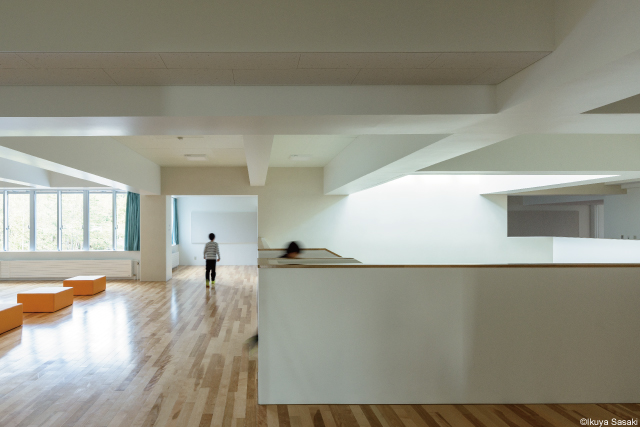
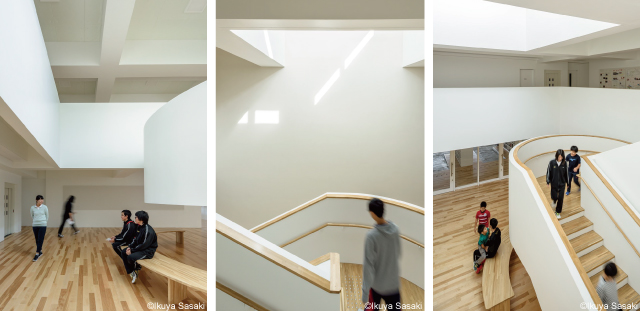

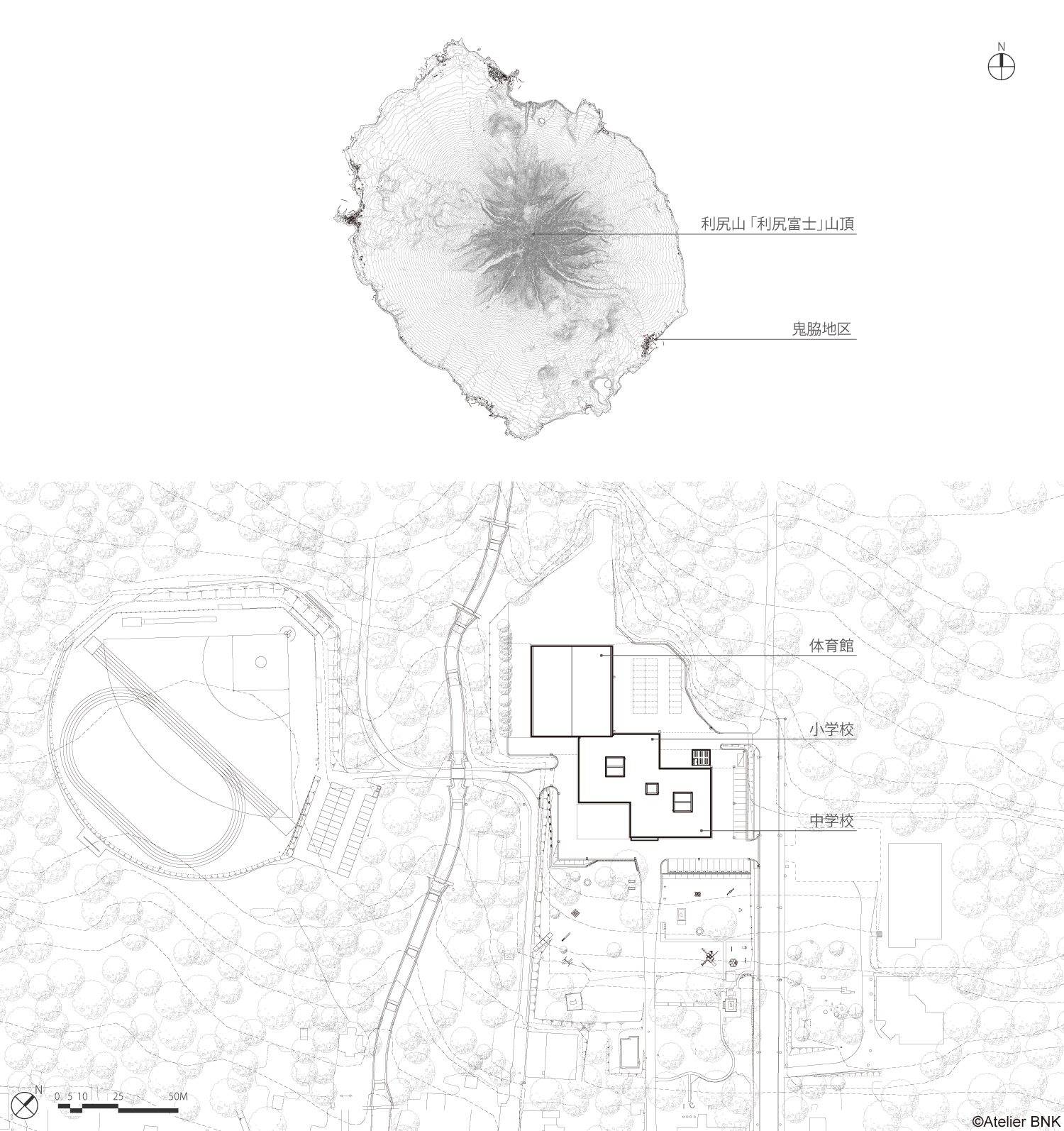
利尻小学校・鬼脇中学校
2018
北海道利尻富士町
構 造:鉄筋コンクリート造+鉄骨鉄筋コンクリート造
階 数:地上2階
延床面積:3,158㎡
札幌構造設計事務所( 構造設計 )
アトリエブンク+総合設備計画( 設備設計 )
北海道北部宗谷地方に位置する利尻島は、中央の「利尻富士」だけが海上に浮いて見える離島である。その荘厳な姿は古くから漁場の目印となり北方との交易拠点として栄えた。海岸線に集落が点在しており、計画地である南東の鬼脇地区は鰊漁と共に盛衰した。過疎化高齢化が急激に進み周辺地域との学校統廃合が繰り返される中、宗谷地方初の学校である歴史を継承し、小学校と中学校を併置することで地域の学校として存続を図る計画である。
敷地は山の麓から続く傾斜地で鬼脇地区の高台に位置し、後背の豊かな自然の中で港まで市街地を見通せる場所である。既存小学校解体後に現れた不整形で狭小な敷地は高い木々に囲われた印象的な空間で、既存樹木を極力残し大規模な造成を避ける計画が必要であると考えた。そこで山とまちと海を結ぶ軸線と直行する等高線に合わせ、3つの矩形が連続したボリュームを配置した。3つの矩形は小学校、中学校、体育館を分節しつつ連続させる。加えて開口の位置や設備、収納等の機能を持つ凹凸を面毎の状況に即して調整することで、「利尻富士」の足元に佇む強度と9年間通う学校としての表情の豊かさを獲得した。子どもたちは「利尻富士」を背景とした歴史ある校舎風景を見ながら登校路を上り、内部の四周の窓から建築と一体的に海、森、まちの風景を望むシークエンスを体感できる。
雁行した平面に対して階段や水回りを中心に回遊動線で連続させながら7.2m×7.2mを基準とした普通教室や特別教室、オープンスペースを四周に点在させた。屋外や体育館に近い1階に小学校低学年、特別教室を利用しやすい2階に高学年、静かな環境の2階南東側に中学校を配置し、適切な距離感を作り出した。利用状況を調査した上で特別教室や体育館、職員室等は小中共用する計画としており、オープンスペースでの交流給食や乗入授業等、小中併置校でありながら一体的な運用がされている。連続的で転用が容易な平面は複式学級、個別学習等、人員が限られる小規模校独自の教育状況にも対応している。
風雪が厳しく塩害地域のため、耐候性の高い素材と外断熱工法で建物を覆い、全体の階高を低く抑え、乾式要素を極力排し、地域の材料であるコンクリートの量塊が空間を形づくる様子を素直に表した。躯体は明度の高い白で塗装し、ハイサイドライト、連窓から光や風景の色を引き込み、部分的な天井や珪藻土塗装を場所毎に使い分け空間に変化をつけた。制約の多い離島の建築として一貫して地元業者で建設可能で、メンテナンスが容易な工法により構築しており、「汎用的工法でつくる建築」が離島での建築の一つの在り方ではないかと考えた。
Rishiri Elementary School – Oniwaki Junior High School
2018
Rishirifuji-cho, Hokkaido
Structure:RC+SRC
Floor:2 Floors
Floor Area:3,158㎡
Sapporo Structural Engineering( Structural Design )
Atelier BNK+Sogo Consultants( Mechanical & Electrical Engineering )
Rishiri Island, located in the Soya district in northern Hokkaido, is a remote island where only the centrally located “Rishiri Fuji” is visible from the mainland as if it were floating on the sea. Its majestic appearance has long been a landmark for the fishing grounds and the island has prospered as a trading hub in the north. Villages are scattered along the coastline, and the economy of the planned site, the Oniwaki district in the southeast, has waxed and waned along with the herring fishing. Amid the rapid depopulation and aging of the remaining population, together with the repeated consolidation and abolition of schools in the surrounding area, the plan was to pass down the history of being the first school in the Soya region and allow its continuation as a local school by consolidating the elementary and junior high schools.
The site is located on a slope that continues down from the foot of the mountain and is located on a hill in the Oniwaki district, where you can see the town as far as the harbor from behind the rich natural scenery. The irregular, narrow site that appeared after the dismantling of the existing elementary school afforded an impressive space surrounded by tall trees, and we thought that it was necessary to keep the existing trees as far as possible and avoid large-scale construction. Therefore, a volume consisting of three connected rectangles was placed along the contour line orthogonal to the axis connecting the mountain, the town, and the sea. The three connected rectangular segments comprise the elementary school, junior high school, and gymnasium. In addition, by adjusting the functions such as the position of the entrances, facilities, and storage according to the unevenness of the surface, the structure acquires the strength to stand at the foot of “Rishiri Fuji” and the richness of expression that becomes a school that the students will attend for nine years. Children can go up the road to school while looking at the historic school building with “Rishiri Fuji” in the background, and experience the sequence of views of the sea, forest, and town from the windows around the interior of the school complex.
Regular classrooms, special classrooms, and open spaces based on 7.2m grid are scattered around the perimeter, with the stairs and plumbing continuing along the uneven plane. The lower grades of elementary school are located on the first floor near the gymnasium, the upper grades are located on the second floor where special classrooms are easily accessible, and the junior high school is located on the southeast side of the second floor in a quiet environment, creating an appropriate sense of distance. Based on a study of room usage, special classrooms, gymnasiums, staff rooms, etc. are planned to be shared by elementary and junior high schools, and although the structure houses both elementary and junior high schools, they are operated in an integrated manner, such as allowing conversation exchanges over meals in open spaces and mutual use of classrooms. The continuous and easy-to-use plane is consistent with the educational conditions unique to small schools with limited staff, such as multiple classes in a single classroom and individual learning.
Due to severe wind and snow as well as salt-damage prevalent in the area, the building is covered with weather-resistant materials and external insulation. The overall height of each storey is kept low, with dried elements eliminated as much as possible, and it forms a straightforward representation of how a lump of the local concrete can create space. The framework was painted bright white, and the colors of landscape and light enter through high side lights and continuous windows, and partial ceilings and diatomite plaster were used for the various locations to create changes in the space. For construction on a remote island that has many restrictions, it should be reliably built by a local contractor using a construction method that is easy to maintain, and we considered that “building made using a general-purpose construction method” is one way of allowing construction on a remote island.
